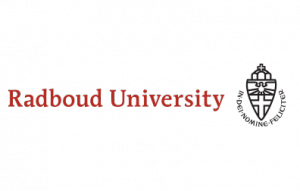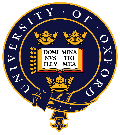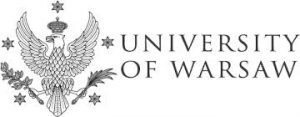Partners
Centre National de la Recherche Scientifique
CNRS is the largest governmental research organisation in Europe, with 1200 research units covering all fields of research. CNRS provides a strong organisational and administrative support to third party funded projects, with dedicated staff on financial, legal, and administrative issues.
The Laboratoire National des Champs Magnétiques Intenses, LNCMI, was created on 1 January 2009 through the merger of the Laboratoire des Champs Magnétiques Intenses (Grenoble) and the Laboratoire National des Champs Magnétiques Pulsés (Toulouse), as part of the Très Grands Instruments de la Recherche (TGIR) of the CNRS. Like its two predecessors, it has three main missions:
– to generate the highest possible magnetic fields for research purposes
– to use these fields for in-house research and to develop the necessary scientific
infrastructure
– to provide access to qualified French and European users to these high magnetic fields and the associated scientific infrastructure.
Each year the LNCMI handles around 150 access projects from scientists from all over the world, after selection by the EMFL selection committee.
Established in 1992, CNRS Innovation is a French public limited company, subsidiary of two major innovation players: CNRS and Bpifrance Financement. With more than 25 years of expertise in transferring innovative technologies to the industry, CNRS Innovation supports all technology transfer steps, from the evaluation and protection of technologies to the elaboration of the operating strategy. Based on this experience CNRS Innovation will help in raising staff awareness and training staff on IPR and economic and societal issues and stimulate collaborations between EMFL and industry.
Helmholtz-Zentrum Dresden-Rossendorf e.V
The Helmholtz-Zentrum Dresden-Rossendorf e.V. (HZDR) is a member of the Helmholtz Association of German Research Centres pursuing long-term research goals that will allow us to maintain and improve the livelihoods of the population. The HZDR conducts cutting-edge research in the areas of energy, health, and matter. Strategic collaborations with both national and international partners allow us to address some of the pressing challenges faced by modern-day industrialized society:
- How can energy and resources be utilized in an efficient, safe, and sustainable way?
- How can malignant tumors be more precisely visualized, characterized, and more effectively treated?
- How do matter and materials behave under the influence of strong fields and in smallest dimensions?
Several large-scale research facilities, each with a unique experimental focus, are available to both internal and external users to assist them with finding answers to these scientific questions. The HZDR offers high-level education and training programs to its scientific and technical staff in close collaboration with universities and colleges. The Dresden High Magnetic Field Laboratory (Hochfeld-Magnetlabor Dresden, HLD) is one of the eight institutes of the HZDR.
Radboud University Nijmegen
From the Radboud University Nijmegen (RU) the High Field Magnet Laboratory (HFML) will participate in this project. The Radboud University is a private, not-for profit organization with significant government funding. HFML is jointly operated by Radboud University and the Nederlandse Organisatie voor Wetenschappelijk Onderzoek (NOW). The HFML is an international facility which uses and develops high magnetic fields to carry out pioneering research by both in-house and external users. HFML has its own research program with three scientific pillars:
‐ Strongly correlated electron systems
‐ Soft condensed matter and nanomaterials
‐ Semiconductors and nanostructures HFML has an ambitious Magnet Technology program and has recently commissioned a world record resistive magnet generating 38 T.
Funding for the design and building of a gradient field magnet is available. A 45 T hybrid magnet is under construction and recently a dedicated free electron beam line connection has been established with the neighbouring FELIX laboratory.
University of Nottingham
The University of Nottingham is a public research university in the city of Nottingham, UK, and one of the largest universities in the country. In addition to the UK, it also has campuses in Malaysia and in China. Across the three countries it employs more than 8000 staff, 32800 undergraduate students and 9500 postgraduate students. The University of Nottingham is a member of the Russell Group of leading, research-intensive UK Universities. The University conducts wide-reaching, world-class research across and between disciplines at all three of its locations. Within the ISABEL project UNOT will coordinate the community building and membership enlargement activities.
The University of Nottingham Superconducting Magnet Laboratory consists of two state-of-the-art superconducting magnets (18.5 T and 17 T) situated in a new purpose-built laboratory. Both magnets have been custom-built to perform interdisciplinary experiments using the technique of diamagnetic levitation to mimic weightlessness and novel differential gravity environments. The unique design of these room-temperature-bore magnets allows convenient access to the high field gradient region of the magnetic field, where diamagnetic forces on liquids such as water, plastics and biological material can be harnessed to counteract the force of gravity at the molecular level. These magnets run 24 hours per day, 7 days per week, with relatively inexpensive running costs, enabling long duration microgravity experiments to be performed.
University of Oxford
The University of Oxford (formally The Chancellor Masters and Scholars of the University of Oxford) is a collegiate research university, a complex and stimulating organisation, which enjoys an international reputation as a world-class centre of excellence in research and teaching. It employs over 30,000 staff and has a student population of over 24,000. Oxford is one of Europe’s most innovative and entrepreneurial universities and it is often ranked as one of the best universities in the world.
University of Warsaw
From the University of Warsaw (UWAR), Faculty of Physics will take part in this project. University of Warsaw is the largest public university in Poland. Faculty of Physics belongs to the best research organizations in Poland (having the highest A+ score in the national ranking). Faculty of Physics is ranked as the best physics faculty in Poland and belongs to the best 150-200 faculties in the world according to the Shanghai ranking of universities. 47 Several topics are covered at the Faculty spanning from particle physics to geophysics. Of interest to this project are activities of the condensed matter group at the Faculty with a strong record of collaboration with EMFL. The research covers mainly properties of low-dimensional semiconductor structures as e.g. quantum dots, graphene and 2D materials beyond graphene, and topological insulators.
Université de Genève
The University of Geneva (UNIGE), the next-largest university in Switzerland after Zurich, was created in 1559 by Jean Calvin and has more than 14,000 students. The high quality of its research and teaching is reflected in the consistently high scores obtained in various international rankings. The UNIGE has built up a vast research network, collaborating with researchers from UNEP (United Nations Environment Program), CERN (European Organization for Nuclear Research), ESO (European Organization for Astronomical Research), ESA (European Space Agency) and NASA. The Department of Quantum Matter Physics (DQMP) has an established track record in the development and investigations of novel materials, focusing on high-temperature superconductors, monotatomic layers and multilayers, magnetic materials, thermoelectrics, multiferroics, ceramic insulators, ferroelectrics, piezoelectrics, carbon structures (graphene), intermetallics, organic metals, as well as materials for renewable energy and sustainable development.
Universidad Autónoma de Madrid
The Universidad Autónoma de Madrid is one of the leading Spanish teaching and research institutions. Founded in 1968, it is part of a thriving research Campus, hosting the recently created Center for Condensed Matter Physics (IFIMAC), that has been recognized by within a competitive selection as a María de Maeztu Excellence Center. The low temperature laboratory (lbtuam.es) has pioneered scanning tunnelling microscopy and spectroscopy at low temperatures and high magnetic fields. The low temperature laboratory is associated to other institutions in the Campus using high magnetic fields and belonging to the Spanish Research Council.
Charles University – Materials Growth and Measurement Laboratory
Charles University (CUNI) is the largest university in the Czech Republic with 50 thousands students and 8 thousand staff. The research performed at the Charles University covers all fields of modern research. Charles University provides a strong organisational and administrative support to its research laboratories. The Materials Growth and Measurement Laboratory is a research infrastructure operated by the Faculty of Mathematics and Physics, Charles University in cooperation with Institute of Physics of Czech Academy of Sciences. The condensed matter physics and materials research is the major research focus of the MGML. More specifically it is magnetism, magnetocaloric phenomena, mutliferroicity, superconductivity, spintronics, and research of Dirac materials. MGML is holding an official license for onsite manipulation of U and Th metals and compounds for purposes of condensed matter and materials research. This makes MGML one of the few laboratories having a possibility of growth and measurements of novel materials containing these elements, making it natural starting point before application of the measurement time at large scale facilities (EMFL, neutron, synchrotron).
National Institute of Chemical Physics and Biophysics
The National Institute of Chemical Physics and Biophysics (NICPB) is a legal entity under public law and operates under the “National Institute of Chemical Physics and Biophysics Act” approved by the Parliament of Estonia in 1998. Today, about 75% of its funding is project based and our research groups are competing with all other groups in Estonia. The remaining 25% comes from the Ministry of Education and Research as baseline funding and it is calculated based on previous performance (number of publications, amount of grants, etc.). NICPB is a research institution where the main task of the scientists is research that values academic freedom. The NICPB carries out fundamental and applied research and engages in the development of the novel directions in material sciences, gene technology and biotechnology, environmental technology and informatics. The NICPB participates in national and international research and development through national, European and international programmes and agreements and application for research and development grants.
Commissariat d’Energie Atomique et Energie Alternative
The French Alternative Energies and Atomic Energy Commission (CEA) is dedicated to connecting the worlds of research and industry. It is one of the most prominent players in research and innovation in France. The Fundamental Research Division of CEA (DRF) is dedicated to research, development and innovation in areas with major societal challenges: Biology, Health, Nanoscience, Climate and environment, Energy, Physic, Chemistry, Instruments and Technology. DRF is organized in 11 research institutes which are localized in the five civil research centers of the CEA (Fontenay-aux-Roses and Saclay near Paris, Grenoble, Cadarache and Marcoule in the south of France) and in non-CEA research centers (Caen and Evry). DRF gathers 3500 researchers, engineers and technicians and hosts 1200 collaborators from research partner organizations. It is strongly involved in research training since it welcomes 1170 Post-Docs and non-permanent researchers (including 685 PhD (50% foreigners). Under H2020, 92 projects involving teams from the DRF have been funded by the European Commission, including 20 ERC Grants.
Oxford Instruments
Oxford Instruments (OI) Nanotechnology Tools Ltd develops and supplies high technology instrumentation to customers in industry, research, academia and healthcare OI is the internationally leading industrial vendor of superconducting magnets and low-temperature technology for research and industry. One of the first commercial spin-off companies from Oxford University, OI has been at the forefront of innovation for many years with a business model that turns smart science into world class products. It began by manufacturing superconducting magnets for scientific research, taking a pioneering role in the development of MRI scanners and high field research and NMR magnets and providing the first commercial MRI body scanner in 1980. OI is a global company that delivers high magnetic field applications in physics, chemistry and materials science.
I-Cube Research
I-CUBE RESEARCH, with its sister company Bmax are innovative SMEs leading the market of forming and welding using Magnetic Pulse processes. I-Cube Research is a research and development company working for the development of Bmax technologies and located in Toulouse, France. I-Cube is focused on high added value applications for the forming and welding in the luxury packaging, aeronautics and automotive industries.
University of Salento
The University of Salento (USAL) is relatively young but characterized by a strong dynamics and highly committed towards regional growth in terms of scientific and technological competitiveness. These objectives are targeted thanks to modern educational programs and high profile research activities. Nanotechnology research is carried out jointly with the CNRInstitute of Nanotechnology. In particular, laboratories located at USAL campus represent one of the largest European nanotechnology facilities, where scientists with different backgrounds work in close collaboration to foster exploratory and seeding research in cross-disciplinary areas (such as spintronics and nanomagnetism, nano- and molecular electronics, photonics and nanobiotechnologies). Due to the strong interdisciplinary know-how, high-level research and state-of-the-art equipment, several multinational companies were attracted in the USAL-Technological District, and joint R&D activities devoted to high-risk technological research are in progress.

European Magnetic Field Laboratory
The European Magnetic Field Laboratory (EMFL) was founded in 2015 and provides the highest possible fields (both continuous and pulsed) for its researchers.
The EMFL is dedicated to unite, coordinate and reinforce the four existing European high magnetic field laboratories – the Dresden High Magnetic Field Laboratory (HLD, Germany), the Laboratoires National des Champs Magnétiques Intenses (LNCMI) in Grenoble and Toulouse (France), and the High Magnetic Field Laboratory in Nijmegen (HFML, The Netherlands) – within a single body as a world-leading infrastructure.
Bilfinger Noell
Bilfinger Noell is a worldwide recognized partner for a wide range of conventional and superconducting magnet systems. BN’s own product area Magnet Technology has been working closely with large-scale research facilities to develop such systems, build prototypes and make them ready for serial production. Thus, using our comprehensive know-how, if larger quantities are needed, BN provides support and assistance based on the expertise derived from many years of working in the field of serial production and project management.
Metel B.V
Metel B.V. is a distinctive supplier and servicer within the metal industry. It is focused on the development and production of high-performance metals. These particular metals are characterized by their specific properties such as: providing a superior heat resistance, high conductivity, high corrosion resistance, specific strength, etc. They find their way into a wide range of industries such as: semi-conductor, petrochemical, Associated with document medical, aviation, offshore and electrical industry. In addition to the delivery of high-performance metal, we are happy to advise and assist in the development of new alloys, with exceptional dimensions, specific tolerances, high mechanical values or combinations of them.
Vonk.Company
Ampulz B.V. was established out of a specialized business unit of Imtech, one of the largest companies specialized in engineering & contracting activities for the oil & gas industry as well as other high grade industries. Ampulz provides complex power conversion solutions and services to various industries and research institutes.
Partners locations
Acknowledgement

This project has received funding from the European Union’s Horizon 2020 research and innovation programme under grant agreement No 871106. Any dissemination of results reflects only the author’s view and the European Commission is not responsible for any use that may be made of the information it contains.


















